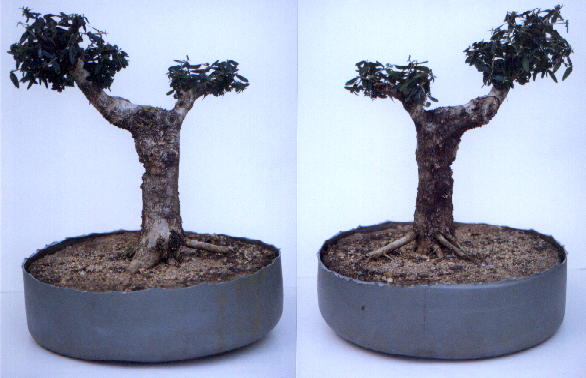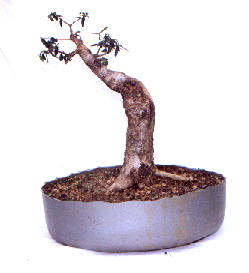Species Information
This tree occurs in a variety of habitats, usually near water, on stream banks, in riverine fringes, but also in open woodland, often on termite mounds, among rocks and in mountain ravines.
- Height: A shrub to medium-sized tree, 3-14m in height. Has been know to reach a height of 18m.
- Bark: Grey to brown or blackish. Smooth becoming striated, deeply fissured and rough. Branchlets have four ridges, making them four-angled.
- Leaves: Drooping and are linear-lanceolate to narrowly oblong-eliptical. 2-10 x 0,7-2,5 cm in size. Have a grey-green to shiny dark green colour with a midrib indented above that is greyish or yellowish. With a 10x lens, silvery, golden or brown scales can be seen on the undersurface. The lateral veins are indistinct, joining to form a wavy vein just inside the margin. The apex is narrowly tapering and sharp-tipped, almost bent backwards. The base is also narowly tapering. The margin is entire, rolled under and curved back from the midrib. Slender petiole of 0,1-1,3cm long.
- Flowers: Greenish white, white or cream. 6-10cm long in loose axillary heads and are sweet scented. Flowers between October and February.
- Fruit: Ellipsoid about 10x8cm and tapering to a sharp tip. Thinly fleshy, turning red and finally prplish black between March and August.
Subspecies africana is the only subspecies occuring south of the Zambezi River. This tree's leaves have fibrous edges when torn.
The wood is close grained and very hard with the sap wood whitish to pale brown, but with handsome, dark reddish brown or golden brown heartwood. It works well and takes a fine finish and is most suitable for quality furniture. It is extremely durable and makes good fencing posts.
An infusion of fresh bark is believed to relieve colic. An infusion of the leaves has also been used as an eye lotion for both humans and animals, while a decoction of the leaves provides a gargle for sore throats.
The plants are browsed by stock, but the leaves are said to be astringent. Although rather bitter, the fruit is edible and widely sought after.
The Olive is drought-resistant and frost-tolerant, but they are slow growing.
My Tree

